CELAnDINE RANUNCULUS FICARIA Common Name: Celandine Latin : Ranunculus ficaria Family: Ranunculaceae
History and/or use: Called Pile wort to treat haemorrhoids. Its rootlets can be fried as tasty food. Wildlife Value: Early nectar provider. Before the hawthorn leaves unfold, Or buttercups put forth their gold, By every sunny footpath shine The stars of Lesser Celandine. Cicely Mary Barker This delightful plant brightens our native woodlands as one of the first to flower going through until the bluebells and wild garlic begin to blossom. As the cuckoo flower is a harbinger of the cuckoo, celandine is said to be the harbinger of the swallow which the plant is named after as the word celandine is rooted in the Greek word for this bird. Its starry flowers are upon dark green heart-shaped leaves which have patches of light and dark colourings. The plant invites early pollinators and will therefore be of use to queen bees and other hibernating insects which will feed on its nectar. Wordsworth praised the plant above all others and dedicated a poem to it, below is the last verse of his poem where he calls it a prophet of delight and mirth. Prophet of delight and mirth, Scorned and slighted upon earth! Herald of a mighty band, Of a joyous train ensuing, Singing at my heart's command, In the lanes my thoughts pursuing, I will sing, as doth behove, Hymns in praise of what I love! William Wordsworth Lesser celandine humbly hugs the earth and if you stoop low enough you can uproot this plant if you have permission and it is in abundance to taste its small rootlets. When the tubers of this plant are fried I feel they have a taste reminiscent of pine nuts. Starchy roots providing valuable calories were very appreciated by our ancestors. The leaves can be cooked but only if collected before it flowers. If you have any medical conditions please check with a medical herbalist first before taking any plant and only harvest it if you are 100% sure what it is! These rootlets are used to treat corns, warts and haemorrhoids and are a typical example of what is known as the doctrine of signatures in ancient classical herb lore. The doctrine of signatures is based on the concept that plants represent the ailment that they cure. A use that is less known is the petals and leaves have been used for cleaning teeth.
0 Comments
Plant and butterfly friends A late summer walk in Stanmer Park truly lifts the spirit. Although it may be considered a city park, it retains the ancient natural features that we experience in the chalk downland landscape that runs 100 miles along the South Coast of England. From a distance all that can be seen is the brown grass that has gone to seed but as one approaches the grassland and looks to the ground a whole new world opens up before them. Plumes of butterflies rise from the meadow, it seems to have been a good year for butterflies as I have spotted an array of species from fritillary to comma, painted lady, red admiral, peacock , common blue, brimstone, large and marbled white. The late John Muir my inspiration and who is known as the founder of the modern conservation movement always has the perfect words of admiration for nature's delights: 'The butterflies coloured like the flowers waver above them in wonderful profusion, and many other beautiful winged people, numbered and known and loved only by the Lord, are waltzing together high over head, seemingly in pure play and hilarious enjoyment of their little sparks of life. How wonderful they are! How do they get a living, and endure the weather? How are their little bodies, with muscles, nerves, organs, kept warm and jolly in such admirable exuberant health? Regarded only as mechanical inventions, how wonderful they are! Compared with these, Godlike man's greatest machines are as nothing.' - John Muir Left to right below : Dwarf thistle & gatekeeper butterfly - Scabious- Round - headed rampion The meadow plants were a true delight, a new friend around every corner. The first sight was the dominating wild carrots standing tall and proud with their feathery 3-pinnate leaves beneath their umbrella-like heads distinctive of the carrot family, their forked bracts fringing the umbels that tell them apart from other umbellifer species. Hugging the earth were countless dwarf thistles which draw the butterflies and other pollinators to them such as the gatekeeper butterfly pictured above. The intense beauty of scabious and the dark blue flowers of round-headed rampion stood out as beacons of hope. Ladies bedstraw straggled the shorter grass whilst the golden yellow flowers of melilot reach to the higher grass. The keen eye will see the tiny flowers of eyebright peeping from the grass and the even smaller wild thyme beneath even the dwarf thistle. The last yellow rattle flowers were spotted with its now visible seed pods from which it is named. Red bartsia and yarrow spring up occasionally and the knapweeds brighten the grass mixed with the lower bright yellow flowers of autumn hawkbit and catsear. Too many plants to mention though it would be amiss for me not to write of the bell-shaped blue flowers nodding on thin stalks of the harebell carpeted by the bright yellow trefoil flowers. Now I am topped up and ready to go home, plants truly give so much. Left to right below : Eyebright- Catsear- Harebell Learn more and support our work by becoming a member for only £15.
VERVAIN - VERBENA OFFICINALIS.
As with any herb that incudes ‘officinalis’ in its botanical name it has a long history of use, this coupled with the fact its generic name ‘Verbena’ is a Roman term for alter plants used for sacrifices points to a very interesting plant. However it is pre-Roman that its connections with healing and spirituality begin. Vervain is thought to have been used similarly to Sage in the Native American traditions, purifying and cleansing ceremonial and living spaces. Individuals have also used the plant for their own protection against infection and calamity. Worn as a talisman around one's neck it is said to help with headaches and poisonous bites. It is thought that it can used for both creating spells and as a antidote for spells. In short this plant has played a key role in healing practices in the British Isles. Due to the fact it is not a true native of Ireland there is little evidence of its herbal use in this Country. As with many plants with a key role in folk traditions, science also points to why this plant has been used extensively. The plant contains ‘verbenaline’ which is a chemical renowned for its ability to reduce fevers and pain. An infusion of this plant can induce sweating and used with yarrow is an effective herb for coughs and colds. More often than not the plant has been used as an external application for inflammations and sores. Internally it also can be taken as a strengthening tonic. After a motor accident I used the mixture of vervain and yarrow to ease pain and strengthen my recovery. If you wish to learn more and support our work you can become a member for only £15 for life-long access: Hawthorn - Guardian of the earth As you walk out onto the Downs taking in the spectacular views, breath-taking scenery and the beautiful array of colourful flowers you may come across a lone Hawthorn tree full of blossom, windswept and covered in lichen. The same tree in winter may be filled with red berries and delightful birds feeding upon them, its whitish grey bark standing out amongst the green undulating hills. Hidden amongst the blossom or red berries are long pointed thorns which the forager may miss and just like the stories be pricked by them. John Keats reflects on the innocence of trees: ‘Trees old and young sprouting a shady boon for simple sheep.’ Chaucer expounds on its beauty: ‘Among the many buds proclaiming May, Decking the fields in holiday array, Striving who shall surpass in bravery, Mark the fair blooming of the Hawthorn tree Who finely clothed in a robe of white, Fills full the wanton eye with may’s delight.’ The naturalist may admire it as a valuable habitat supporting insects, birds and mammals with flower, fruit and shelter. The Bard may well acknowledge as Kipling once did its role as a witness through the ages: ‘Oak of the clay lived many a day if ever Aeneas was born, Ash of the loam was a lady at home when Brut was an outlaw man, Thorn of the Down saw New Troy Town before London was born, Witness hereby the ancestry of Oak and Ash and Thorn.’ It is easy to see why magic surrounds this tree which has been with us across time as it merges innocence with harshness out on the Downs or Moors. A pricked finger serves as a warning, its blossom and berries help induce sleep whilst many a songbird takes you into another realm with the beauty of its song whilst perching on its branches. In Ireland it is recognised as the Faerie tree harbouring the elementals and it is not hard to see why this is so. Stories abound of what may happen to you if you were to harm the tree. So firstly, let us reflect on the pragmatic roots of these tales not to remove the magic but to explore the themes that this magic indicates. A lone tree in an otherwise flat landscape is surely home to the elementals as its role is paramount in creating further biodiversity out on the landscape. When names and relationships are given to landscape features, we create an intimacy with them and thus wish to protect them. Therefore, a warning about destroying special trees in the landscape is perfectly justified for they are of such value. You may not be struck by lightning or whisked aware to faerie lands when you destroy these precious trees but the impact you make on the landscape has far-reaching effects on the physical landscape and therefore the psyche of the inner landscape- the soul. When country folk or indigenous people speak of Faerie land or elementals we are entering into more subtle unexplained realms. When we see the increase in chronic problems and mental health issues who is to say how the destruction of nature has not only affected our planet but also our own inner health. These effects long understood in the metaphor of story are only just starting to be understood in the scientific world. The folklore of Hawthorn Huath is Whitethorn. A meet of hounds is White thorn, it is formidable owing to its thorns. Pack of wolves. A difficult night, Hawthorn. Whitening of face. Book of Ballymote 1391 Hawthorn represents the inevitable back lash, both positive and negative of taking action in one’s life. It is also the abode of the heart where we are nourished, protected and loved. You can take shelter in the hawthorn thicket to strengthen your heart and resolve. ‘Earth has no sorrow that earth cannot heal.’ John Muir The Hawthorn has two sides to it. On one hand it is a healer of the heart, a tree of protection and a supporter of life. It is also a guardian of sacred wells (to which cloth is tied to), a love charm and is said to help cattle thrive and a food source for weary travellers, which is why it is known as the bread and cheese tree. On the other hand, it is a tree that protects and harbours the elementals taking people into Other- realms with a more a sinister side to its nature. This is the winter thorn standing in the thicket as a speared warrior dedicated to the powerful archetypal earth guardian. Huath, its Ogham name, means frightful or horrible, reminding us of the inevitable backlash our actions can bring. It is said in the old stories that devastating satire was pronounced whilst holding the thorn of the tree. Maybe this is why there is a custom of adorning and worshipping Hawthorn known as ‘bawming the thorn’. The lessons therefore of Hawthorn are intrinsically linked with cause and effect, how our actions impact on the world around us and indeed in our own inner landscape. More recent traditions whether it be Christian or even in the more recent ‘New Age’ movement we find an overt focus on the light and the heavenly realms which is in danger of cutting us off from our roots. If the fallen angels did come to the earth it makes perfect sense that they would take the forms of reptiles and giants. For the reptiles are the most primitive forms of life on this earth and the giants in mythology are the raw elements of the earth- its guardians. By reaching down into the depths to discover our primitive self, one can put down strong roots and build a foundation that is unshakable in difficult times, being aware of our innate connection to the earth, soil and rocks. Ecology of Hawthorn. Crataegus monogyna (common hawthorn) Crataegus laevigata (midland hawthorn) Droiheann (old English) Hagaporn ( Anglo-Saxon) Huath (ogham) There are two types of Hawthorn known in this country. The first is common and widespread, the second (known as Midland or simply woodland Hawthorn) is restricted to the South and East and is an ancient woodland indicator, an uncommon sight. The latter has a bushy habit and shallowly lobed leaves, able to flower in the shade. This distinction was first made in France in 1790. Hawthorn, especially since the 1500s, has been an important underwood species grown for fuel and its bark used for ink. Before barbed wire hawthorn was our main fencing, and early forestry writers recommend hawthorn as a nurse tree when sowing a new plantation. However the tree can colonise chalk downland too effectively becoming a permanent habitat thus threatening the delicate balance of our downs. This is known as being ‘bushed over’. The hawthorn is generally welcome, tolerating shade and grazing effectively (although new growth takes three weeks for the thorns to harden up and protect the plant from mammals like deer). The tree supports many insects, birds and mammals providing cover, nectar and fruit. Uses of Hawthorn Hawthorn wood is hard wearing ideal for knife/dagger handles making them lucky. Its root wood is also used to make beautiful small boxes and combs. It is also good firewood. As a herb its berries, leaves and flowers are great for heart problems, especially high blood pressure, insomnia and helping one relax. In the recording below we enter the plant kingdom and meet the primordial Mother known as Banbha. Meditation Traditions of the Western Lands The response to my meditation courses this year has been heart-warming as people have told me how the sessions have really helped them switch off, relax and calm their minds for the first time. People with anxiety, ADHD and autism have said the meditation has really helped them. One of the most frequent questions has been : 'Before your course I had never thought in terms of my own indigenous roots in these lands, please can you tell me more?' This article is in response to this question but before we look at the source material let us briefly examine the word 'Tradition' and what it means in terms of the meditation practices that I offer. In all the courses that I run I encourage the participant to connect with the tradition that unfolds within them, the thing that most resonates with them and informs them of their own inner worlds for tradition is always welcoming and inclusive but at the same time personal and intimate. I believe the tradition chooses you, it is the essence of who you are and is in the blood, bone and spirit of your being. It may be that you are attracted to several traditions and each of them speaks to you in different ways. As each tradition informs us of the world that we belong to, it must also follow that there is a common thread that unites them all, I feel it is imperative that we find this common thread. Reclaiming my own tradition. My exploration of my indigenous roots has been a life-long pursuit. As with many Westerners in the 21st Century I felt I was exiled from my spirituality for it was divorced from my everyday life. It has often felt to me that life has moved on, that the spiritual life of the past has been replaced by a materialistic and separatist culture fed by a greed that gnawes at the soul that longs to feel complete. To be termed a ‘modern seeker’ or to have a ‘modern perspective’ on things just didn’t cut it for me. A modern person didn’t just pop out of the ground newly made for today’s society we are connected to an ancestral legacy going back to the beginning of things. We are all indigenous people of the land to which we belong to with our own spiritual lineage, which is wanting to hold us as we traverse our life experiences. Reclaiming our roots is the first step in connecting with the natural world for being present to nature means to know oneself. The Irish tradition There are three key reasons why I use the Irish traditions as my source material for courses:
The recording below introduces the chant we often use before meditating followed by some written information on the story behind the invocation from the Irish tradition. Our meditation starts with honouring the land. The land is the mother, the provider of everything we need and it is she who is honoured first in Irish lore. The land is often personified as a Mother Goddess and was seen in the landscape as the undulating hills or the life-giving waters. In Ireland there is a story of how the ancestors of Ireland took the land. When they arrived their chief poet Amergin white knee put his right foot upon Erin’s soil and he chanted the following words thus experiencing complete identification with the land and becoming all aspects of it from mineral and soil to plant and tree, to animal and bird to the landscape itself.
He chanted: ‘I am wind on sea, I am ocean wave, I am roar of sea, I am bull of seven fights, I am vulture on cliff, I am dew-drop, I am fairest of flowers, I am boar for boldness, I am salmon in pool, I am lake on plain, I am mountain in a man, I am a word of skill.’ Once they arrived they also had to make a pact with the three Queens of Ireland, the sovereignty of its land. They are called : Banba ( the women of cows), the wife of MacCuaill, the son of Hazel. Fodhla (the women of soil), the wife of MacCecht, the son of the plough. Eriu, the wife of MacGreine, son of the Sun. These traditional Gaelic names of women are the names of the land of Ireland however they can also connect us to which ever land we live upon at this time, for we chant with the intention of calling to the sovereignty of all lands across the world, reminding ourselves that we are all part of the same deep ancestry. The words in the invocation below are from the text known as the Lebor Gabála Érenn - the book of the takings of Ireland. Chorus: 'Eriu, Banba, Fodhla, I seek the land of Erin, Fruitful be her seas, perpetually green her forest, I feel her in my bones, I feel her in my blood. I invoke the land of Ireland, surging is the mighty sea, Mighty is the upland full of meadows, full of meadows is the rainy wood, Rainy is the river full of waterfalls, full of waterfalls is the spreading lake, Spreading is the spring of multitudes, a multitude of people is the assembly, The assembly of the King of Tara, Tara is a tower of tribes, The tribes of the sun of Mil. Warriors of ships, of vessels, Ireland is a mighty vessel, Flourishing is Eber Donn, a very wise incantation, of the very wise wives of Bres, Outcry of the wives of Buaigne, Ireland is a vast woman, Eremon smote her, Ir and Eber entreated her. I invoke the land of Ireland.' I hope this article helps in elucidating the source material behind the meditations we use. For a much more detailed introduction you may like to join the Woodland Bard Course by clicking on the button below: JULY FORAGING WALK Our latest foraging walk at the beautiful site of the Sustainability centre was filled with many plant delights. At this time of year, the butterflies are bursting with colour above nectar filled plants and nature's exuberance is bursting with enthusiasm, the late John Muir always seems to find the perfect words for such an occasion : 'The plants are as busy as the animals, every cell in a swirl of enjoyment, humming like a hive, singing the old new song of creation... Insect swarms are dancing in the sunbeams, burrowing in the ground, diving, swimming, a cloud of witnesses telling nature's joy' John Muir 1838 - 1914 Meet the plants: ( hover on the plant to discover its name) Please note that if you have any medical conditions please check with a medical herbalist first before taking any plant and only harvest it if you are 100% sure what it is! We were first greeted by the upright vibrant blueish violet flowers of the self-heal plant (Prunella vulgaris) which is a low growing herb that provides ground cover hugging the earth and providing nectar. It is an edible plant that acts as astringent for wounds and for internal bleeding. Cleavers or sticky weed clambered amongst the strong woody nettles, both plants full of nutritious value especially earlier in the year. I demonstrated how nettles could be turned into natural string and how the bedstraws (Rubiaceae family) to which cleavers belongs to were used for bedding by our ancestors. We spotted more ground hugging plants which were coming to the end of their flowering season including ground ivy and speedwell. Speedwell is a wonderful plant known as one of the wayfarer herbs guiding the lone traveller along country lanes cheering their journey and offering good luck. The phrase 'speed you well' can be used as a blessing when people set of on their journey. This edible plant can help relief bronchitis, whooping cough and catarrh. Ground ivy up until the sixteenth century was used in brewing to clear the fermenting liquid and add a sharp flavour. This beverage was known as gill-ale and unlike most ales was reputed to clear the head effectively often within 24 hours. Jonathon Swift (1767) is quoted as remarking on this drink. This plant can help soothe the stomach including griping pains, coughs and chest disorders, it also will help clear mucous membranes and as an inhalant can help colds, coughs and respiratory complaints. The upright Rosebay willowherb dominated the grassy areas beneath it. This willowherb is the only species that is generally safe to use for food and medicinal uses. As a herb it is used dried for whooping cough and asthma. As a food plant the young shoots can be steamed and peeled and its pith is used to thicken soups. The leaves can be used as a garnish or dried for a tea. Peeping out from the woodland paths were herb robert plants which are native geraniums growing in shady areas and often on more acid soils. It branches out with stately foliage, each bright green leaf is lined with red carefully drawn by nature's fine artist. The fresh leaves can be used as a compress for wounds and as a sedative and astringent, as well as gargle for sore throats and mouth. A lotion can be made from it for irritated eyes. The plant can be dried and used internally to lower blood sugar for diabetics, help diarrhoea, peptic ulcers and treat an internal haemorrhage. Agrimony has upright bright yellow flowers which brighten up field margins, road verges and hedgerows. A plant that is well worth harvesting, it lifts the spirits making an invigorating tea for many complaints from aching joints to sore throats. It is a good general summer tonic.
Vervain contains ‘verbenaline’ which is a chemical renowned for its ability to reduce fevers and pain. An infusion of this plant can induce sweating and used with yarrow is an effective herb for coughs and colds. More often than not the plant has been used as an external application for inflammations and sores. Internally it also can be taken as a strengthening tonic. Dock is known as the cure for the nettle sting and this extends to any burn, scald or blister as the juice of this plant has many healing properties. Ironstone quarry workers are said to have rubbed freshly cut dock on their forearm sores. Science is now calling dock a placebo but I have found dock incredibly effective when treating insect bites! It's root is rich in iron. Learn more by subscribing to our Free Newsletter: Left to right - Dark Mullien - Striped Lychis moth As I gaze at a single plant a unique habitat unfolds before me. My heart melts as I watch the shield bug as a nurturing mother guarding her newly hatched offspring of wingless nymphs, young woodlice explore the velvety leaves released from eggs carried in a tiny pouch of this delightful crustacean. The most exciting find is the caterpillar of the striped lychnis moth which is a nationally scarce priority species of the Downs where I work with a preference to this single plant which I am focusing upon - the dark mullein. This is why nature exploration is endless as we can explore a single plant for a lifetime and then look outward to the key biomes of the world from tundra and boreal forest to rainforests and grasslands then move our focus to the specialised habitat of the chalk grassland and to a single species. Left to right - Bramble flower - Agrimony - Wild carrot Our July story continues with an abundance of flowering bramble which cuts and stings and yet provides the perfect feeding station for our winged beauties as noted by John Muir: 'Insect swarms are dancing in the sunbeams, burrowing in the ground, diving, swimming, a cloud of witnesses telling Nature's joy.' John Muir spent his life celebrating nature and urging people to protect it, his attitude to all species surely needs to emulated: 'I always befriended animals and have said many a good word for them. Even to the least-loved mosquitoes I gave many a meal, and told them to go in peace.' As I continue along the path I spot the distinctive spikes of the yellow flowers of the agrimony marking this time of year amongst the large white flower heads of the wild carrot with its hidden secret, just one small central dark red floret that produces nectar! I enter a wetter habitat of the noble meadowsweet with her clusters of creamy white flowers against the striking purple flowers of marsh woundwort and clusters of gold flowers of the St John's wort. I marvel at the joy of the tiny mauve flowers upon the hairy lobed leaves of vervain pictured below, a most useful herb as a relaxant and nerve tonic- nature's unfolding delights truly are marvellous. Find out more and support the work of Walk with Trees (devoted to plants since 1998) by becoming a member:
In our last Woodland Bard Live Online session we entered into the deep memories of the Earth through the hawthorn tree. We chanted to the Earth Mother and entered the well of memory. In its depths was the old Bard who would be our guide. His name is Tuan MacCairill and he witnessed the coming and going of the races of Ireland as well as the stirrings of nature through the forms of the animals. In Celtic lore and indeed indigenous culture all across the world it is the animals which are our guides and hold the memories of the Earth. Tuan MacCairill by taking the forms of the animals of Land, Sea and Sky is able to enter into the evolution of the Earth tracing its early stirrings back to the first species that would have witnessed it. I’m Tuan MacCairill, ancient bard of old, remembering our Celtic ancestry and the stories once told. ‘I approached the caves of the hoary sleepers. I was old and decrepit. In the cave I was born again, young and glad of heart. I was a stag of nine tines, king of all deer, Victory and joy were easy for me. I witnessed all the deeds of Neimheadh. I was a wild black, king of all boar herds, Faithful to any custom. I witnessed all the deeds of the Fir Bolg. I was a great eagle, King of all the skies, I rejoiced in youth and vigour. I witnessed all the deeds of the Tuatha de Danann I was a speckled salmon, King of all fish, Wise beyond all years. I was eaten by the Queen of the Milesians and as a human born again.’ As we enter the well and connect to our inner landscape we can experience the deep memories that are contained in our souls. As you enter the well and meet Tuan MacCairill imagine taking the form of a deer, feel what it is like to be this powerful animal of the land and experience the qualities of victory and joy. Continue on into your inner landscape and become a bristly black boar in the old woods, feel its strength and determination. Ask yourself what customs are you faithful to? What are the elements that hold you to the essence of all that you are? In your own time become an eagle and soar across the landscape rejoicing in youth and vigour. What is that spark that keeps you alive and full of energy? Then finally enter the Salmon pool and meditate deeply on your innate wisdom, experience a connection to the deep memories of the Earth: - Meditate - This Sunday (30th May) at 6pm you may wish to join us for our next Woodland Bard Evening which uses the power of story, poetry and chant to aid deep meditation. THE FIVE INVASIONS AND FIVE EXTINCTIONS
In our Woodland Bard Evenings we have been exploring the Takings of Ireland (Lebor Gabala Erenn). These invasion myths are fascinating for they not only do they cover an evolution of the land but also its destruction as the various attempts of creation end in disaster. When we remember that this was written before science had uncovered so much of the earth’s history, it is incredible the understanding it brings of ecology and evolution. My interpretation of the story you will find in the above recording. We now know that there have been five mass extinctions which demonstrates this concept of whole species being wiped out is exactly how the creative powers of evolution has behaved. These stories ironically are often called the Five invasions of Ireland. We will continue these stories in more detail but for now the five races in this context would be the first race of Cessair or Banbha, followed by Partholon, the Queen of which was Dalny, the Neimheadh who’s Queen was Macha and then the Firbolgs and the Tuatha de Dannann. This theme of extinctions has come to light in recent times as the actions the human race has had upon the earth are becoming more and more apparent. The five mass extinctions were often to do with change in atmosphere and climate and it is the plants that are needed to stabilise these effects. Once there has been a mass extinction the remaining species will then start to thrive. As with the story above it is like a constant balancing act as creation changes and responds to how species colonise, sea levels change and volcanoes erupt. The last extinction which wiped out the dinosaurs may have come from a shower of asteroids hitting the earth. The further theme explored in the above story is how creation reacts to change. After Banbha is taken down to the sea the Giantess Domnu gives birth to the giants which start as disfigured grotesque beings and then become the most beautiful beings ever known. This as we have already explored is how nature is, embodying all aspects of dark and light. After each extinction or successive wave of evolution the surviving species left can then flourish, they are the ideal species to cope with the new conditions and are now free from all competition. We are currently in a sixth extinction which is a process that usually happens over millions of years. The fact is this latest extinction process is happening a hundred times more quickly than the natural evolution rate. The facts are staggering and I write them here not to induce fear but to bring us into alignment of the truth of what is happening. Today we have to be careful about the sources that we study, we have to make sure the facts have been correctly gathered and researched. Expert scientists that are well-informed by correctly gathered research include Sir Robert Watson who is the chair of the intergovernmental platform on Biodiversity and Ecosystem services, Professor Kathy Willis, a plant scientist and Professor Elizabeth Hadly who is a biologist as well as the important work of Dr Toby Gardner who is a director of Transparency for Sustainable Economies. For the first time in history scientists and economists from all over the world have assessed human activities and their global impact. Many of these experts have been aware of this crisis for at least 25 years and because of the pressure from gigantic corporations and Governments, the facts have been completely ignored. Currently we are destroying species from all parts of the world from all different orders and classes simultaneously at the highest rates ever in history! - In 50 years 60% of all birds, mammals, amphibians and reptiles have declined. - Twenty five percent of our plant species are threatened. - Five hundred thousand insects are in danger. - Thirty percent of the world’s soil has been degraded and now has a low biodiversity. - Three quarters of all our large animals have disappeared from the areas they are historically found. - Five hundred thousand species of animal and plant species are in danger of extinction. - The land surface has lost ninety percent of its wetlands. - Seventy five percent of the land surface which is not covered in ice is being used for just one species. We currently destroy about ten million hectares a year of Forest per year. In just 40 years we have cut a billion hectares, an area the size of Europe. How can this not have an effect when we are aware plants support our key life cycles? Our crops depend on the soil and three quarters of the world’s food crops require insect pollination. Although climate change is rapidly becoming the biggest issue we need to face, currently habitat destruction is the most serious threat driven by our consumption of mainly soy, cocoa, coffee, palm oil and beef. The incredible facts to currently note is we do have enough cleared land to feed the world especially when you consider forty percent of our food is wasted and the solutions are economically viable creating jobs and opportunity to come out of our current world recession. Top economists such as Professor Lord Nicolas Stern and Sir Partha Dasgupta are stating that if companies pay a high price for extracting from nature it will benefit us all creating affordable food without the need for expansion and waste. The banning of CFCs was the perfect example of how quickly industry adapted to create more environmentally friendly products. The above information is yet another example of how the most ancient mythology is still relevant today and as we continue the story cycle we shall see that working in harmony with the planet that was expressed from what seems as early as megalithic times is paramount to the intrinsic motivation of all indigenous people from around the world. If you would like to explore your indigenous connection to the land, join us for our Woodland Bard evenings. The next one is on Sunday 16th May@6pm, all are welcome. Willow invites us to acknowledge our grief and suffering and be aware of the destruction we unleash onto the green world. Owning up to the part we play in harming nature need not be a depressing or guilty process but an empowering, compassionate and ultimately freeing process.
It is only by entering the darkness, feeling grief and truly acknowledging the darker aspects of ourselves that we can discover the strength of bees which is the entrance to the ‘Delightful land of honey and wine.’ The Kennings of the Willow tree take us into the realms of death linking willow to bees, grief and loss: Willow, the colour of the lifeless one owing to the resemblance of its colour to a dead person. Hue of the lifeless. Beginning of loss, willow. Strength of bees. Book of Ballymote 1391 In Celtic lore the old women of wisdom, may be gnarled and twisted just like a Willow but command respect and bestow wisdom. In fact it is the old crones like the Cailleach and the Morrigawn who are the guardians of wisdom and the mysteries of death. Meditation- Gifting the land Visualise the land, a place you have a deep connection with as in previous meditations, somewhere you know on the physical realm. Imagine going into the land through a doorway or well and as you go into the land you arrive within it experiencing your patch of land as it looks in subtle reality. It may look the same or maybe you notice differences, allow it to express itself however it wishes to be seen. It may be a different time of day or have a different flora or aspect. Focus on pouring your love into the land, feel that gentle connection to all of life. As you breathe you become more and more relaxed and feel more connected. Now get a sense of a Willow tree and as you walk the paths of your inner landscape allow her to reveal herself. Sit under the old mother willow protected and nurtured. - meditate- After a while make an offering to the tree, you may wish to offer what you value the most and as you offer it watch the Willow transform your gift and without expectation see if she offers something back. Gently pray and offer blessings to the Willow and all of nature, be filled with peace. We can all feel the support of nature with the knowledge that we must also give something back. I will leave you with these simple words from the Penan tribe from Borneo in South East Asia whose words are now reflected in our most recent scientific research: ‘We as Forest people have to be equal to one another. There’s absolutely no one above the other. We are exactly the same. Trees are like humans. If the really big trees die, so do all humans. If the forest dies, humanity dies. The Forest may die. The forest says: We are all part of the same family’ If you would like to join us Live online to explore the Willow and a gentle connection with the Earth Mother please click on link below: |
Details
Poetry of flowersJoin me to explore the flora of the British Isles on this blog. My intention is to attempt to capture the unique quality and beauty of each species of flower, tree or shrub. For every species featured I will be growing many more wildflowers to celebrate the joy of their existence, their intrinsic conservation value and bewildering array of uses. For nearly 30 years I have noted, studied and explored wildflowers in the field much to the patience of the walker beside me. To share this passion is a heartfelt plea to respect, preserve and care for all British Wildflowers no matter how common they seem. Archives
February 2024
Categories |

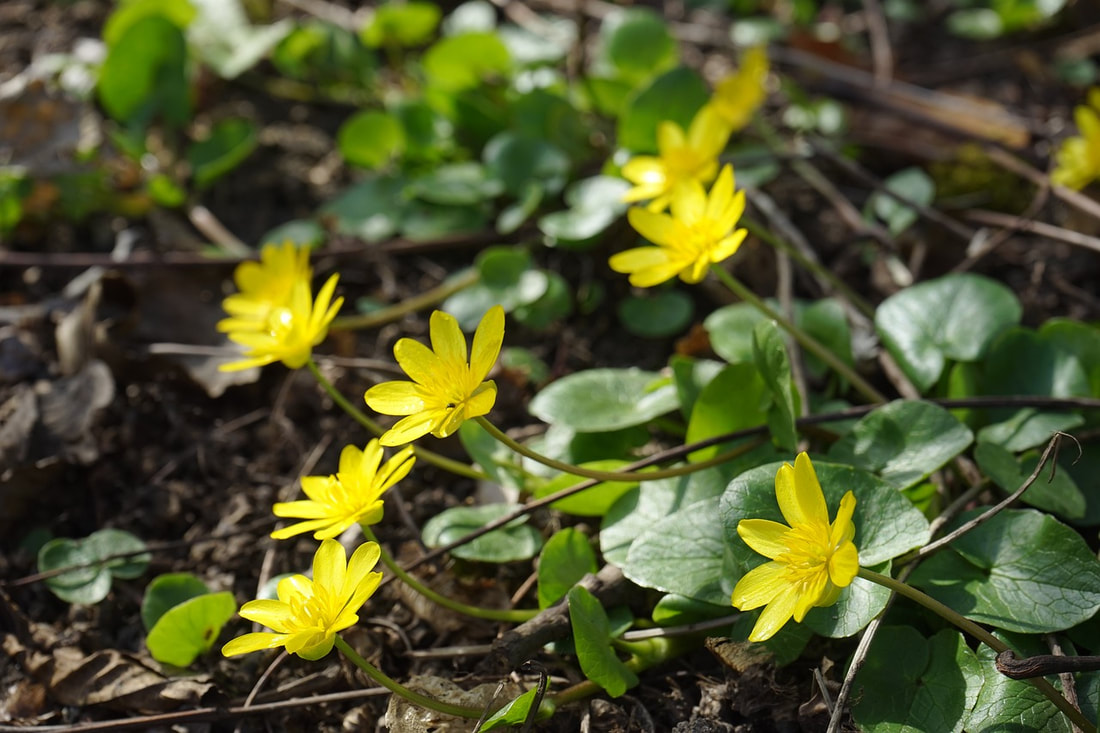

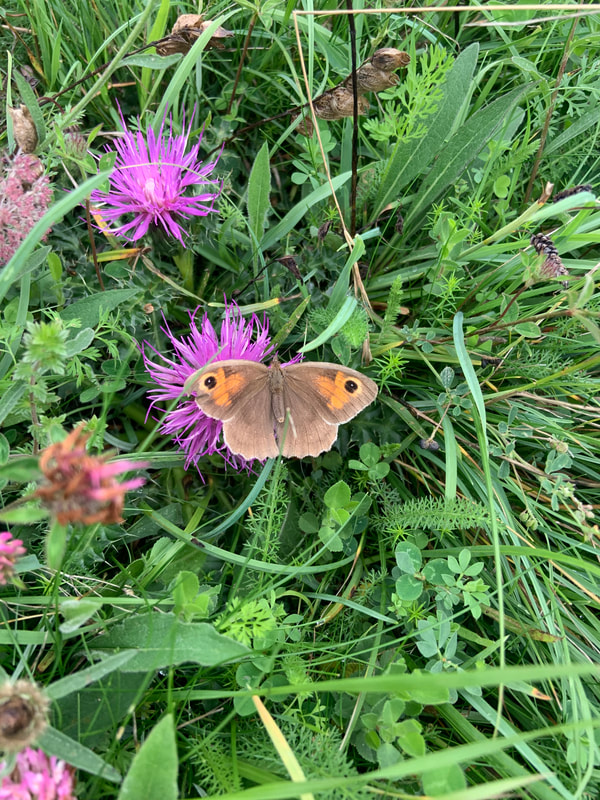

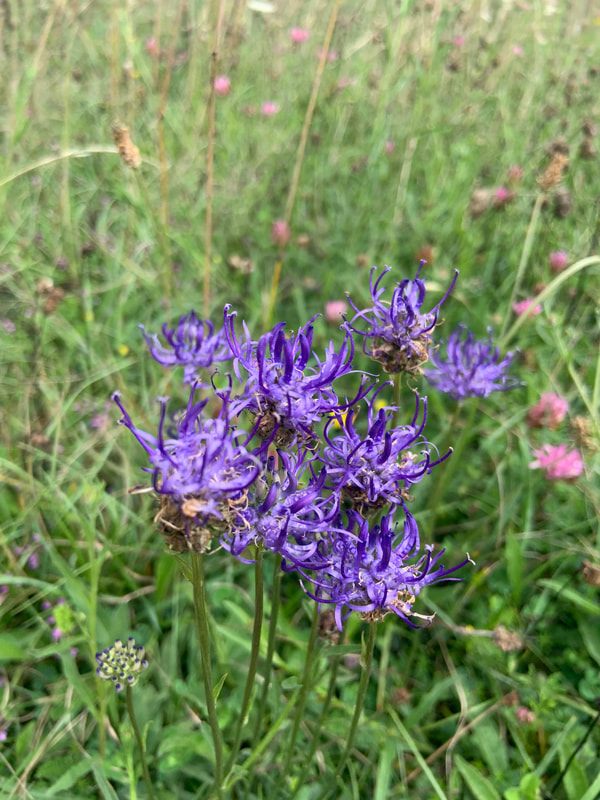


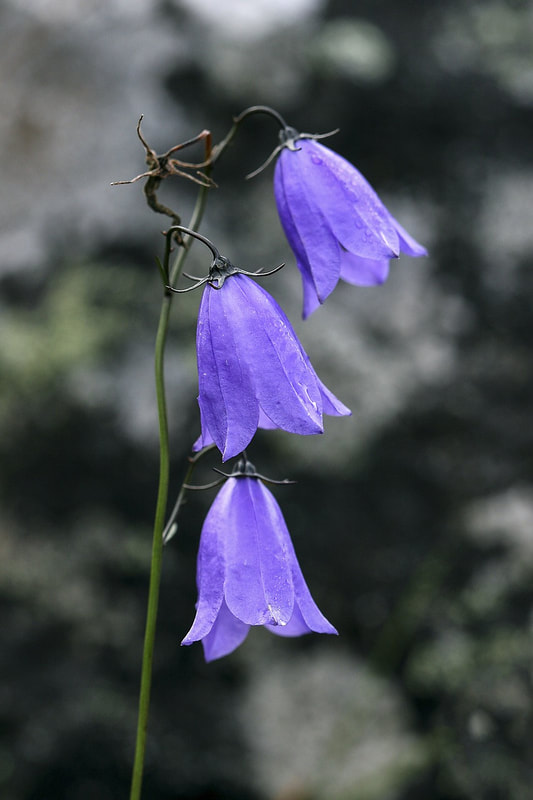




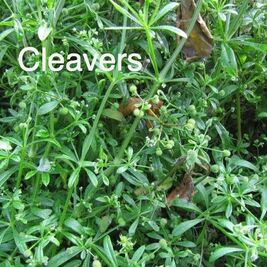

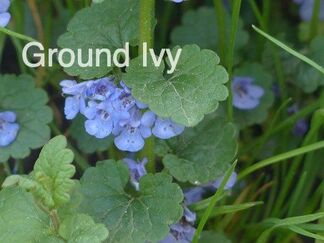

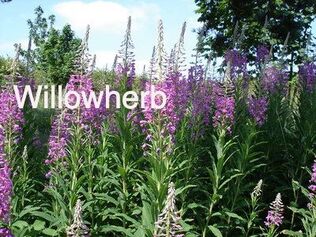
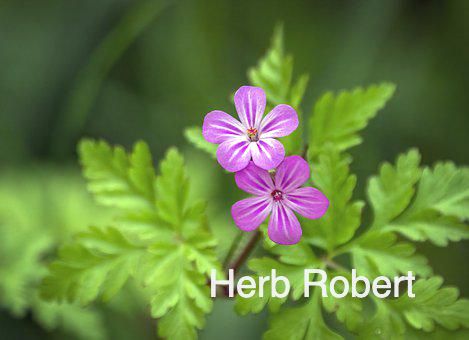
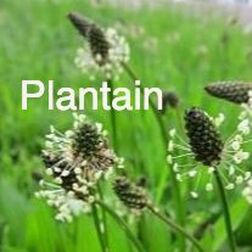

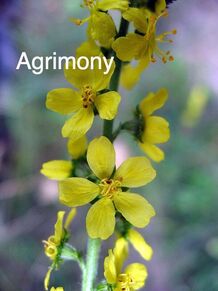
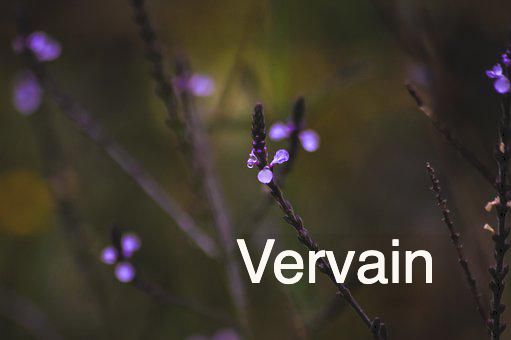
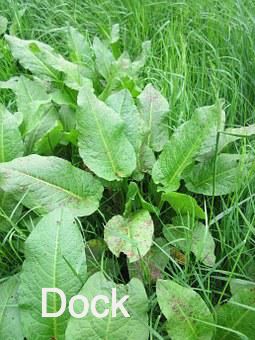


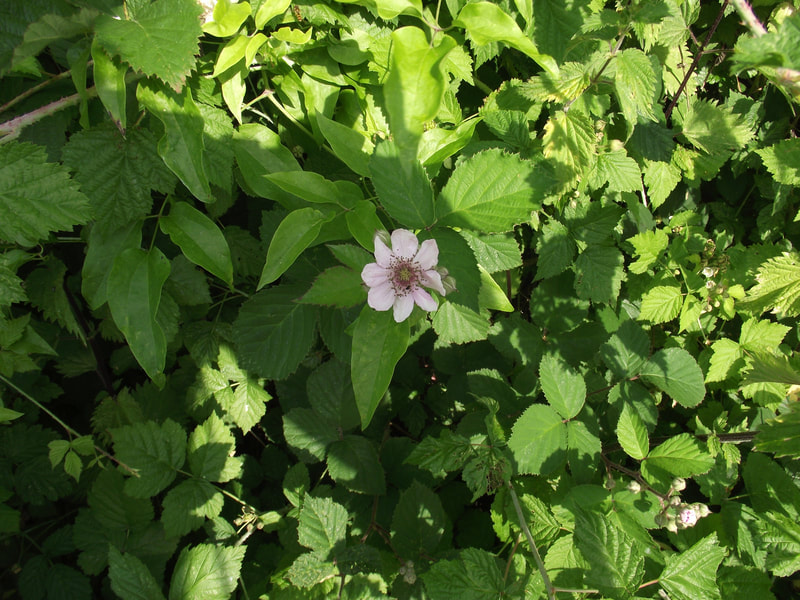

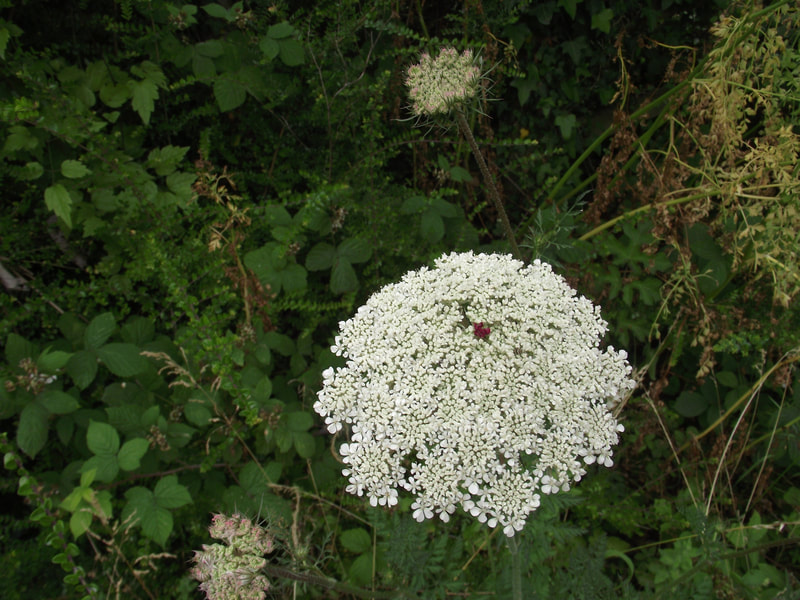

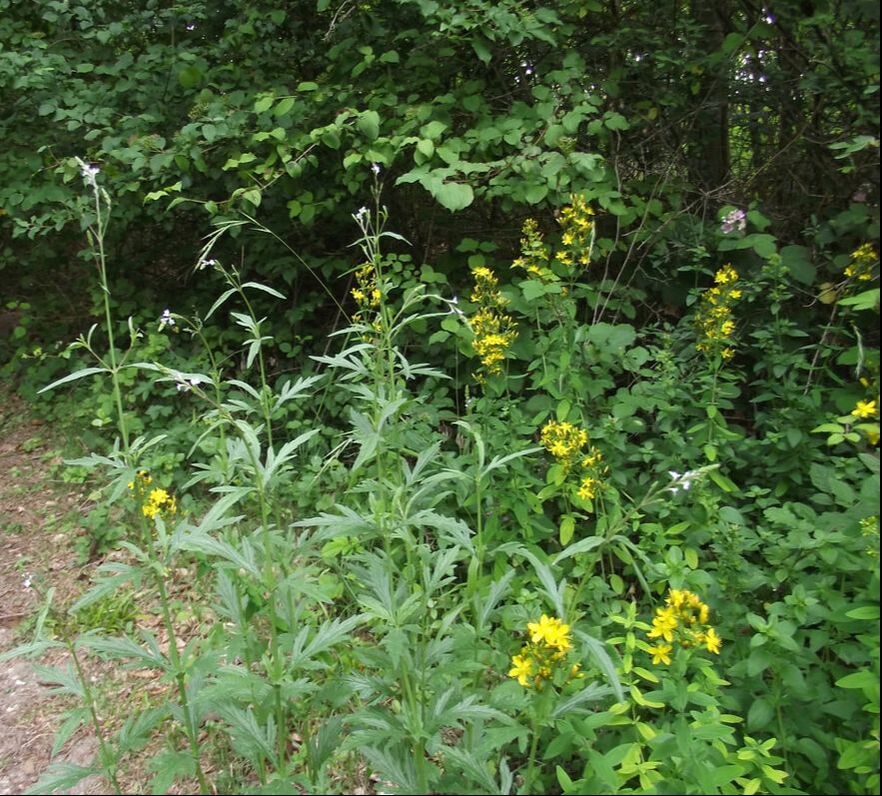
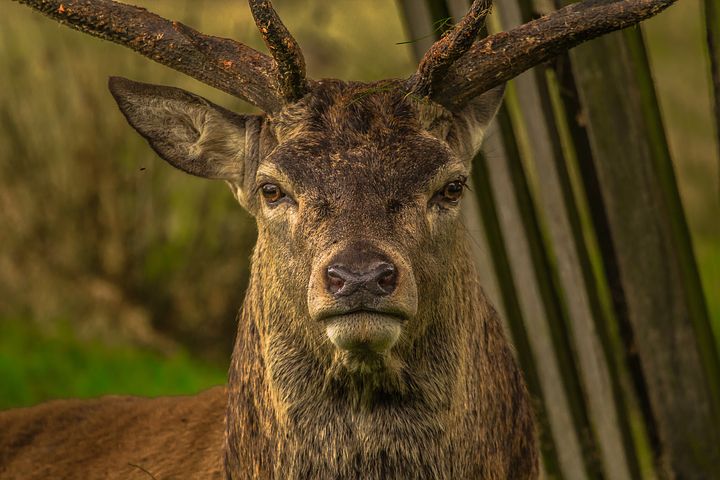
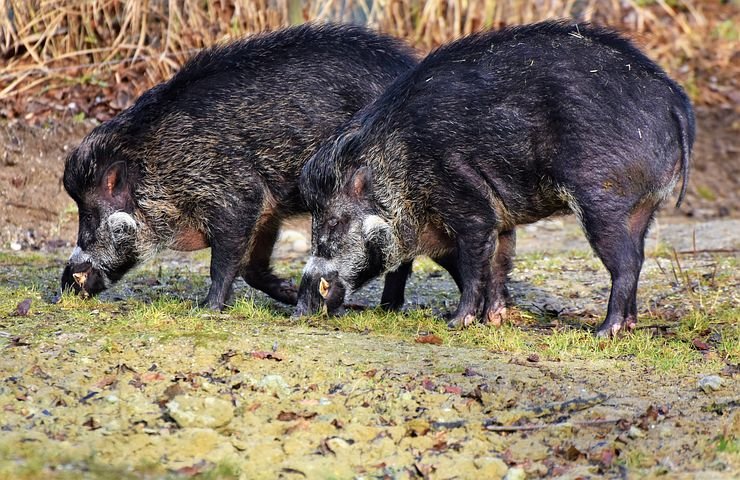



 RSS Feed
RSS Feed
